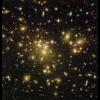Wow, very exciting. Seems to realize the potential hinted at in the big Sinclair study that showed muscle of old mice looked like young. Here, they actually performed like young mice.
2 month of NMN results in old mice showing the endurance of young mice. They conclude it is the activation of Sirt1 increases capillary growth which is the key to youthful muscle performance, not the increased mitochondrial function. Much to digest, but seems spectacular results.
Also note, most benefit incurred when combined with exercise - much more than NMN or exercise alone.
Some quotes below:
To restore NAD+ levels, we administered NMN to 18-month-old mice via drinking water for 2 months at 400 mg/kg/day
NMN restored the number of capillaries and capillary density of the old mice to those typically seen in young mice
but the most striking effect was a 56%–80% improvement in endurance, with lower post-exercise blood lactate
NMN did not alter the capillarity or exercise capacity of sedentary animals younger than 12 months (not shown)
There was a strong effect, however, in young mice on NMN after endurance training for 1 month, resulting in 70% more capillaries than untreated sedentary mice, more than twice the effect of NMN alone
Exogenous Hydrogen Sulfide Activates SIRT1 and Augments the Effects of NMN
As a signaling molecule, H2S shares many similarities with NAD+. It increases SIRT1 activity, protects against oxidative stress, and can promote angiogenesis
Treatment of HUVECs with NaHS or NMN alone increased SIRT1 protein levels but the combination was even more potent (Figure 7A).
In response to H2O2 treatment, NMN reduced the number of apoptotic ECs from 42% to 17% and, in combination with NaHS, reduced it to 11% (Figures 7F and S7E).
NMN also reduced apoptosis in HUVECs by 13% and the combination reduced it by 36% (Fig- ures 7G and S7F).
Mice treated with NMN had 1.6-fold increase in time and distance run compared to untreated mice (Figure 7H), while the combination of NMN with NaHS treatment doubled their endurance.
Interestingly, NMN supplementation had no effect on the capillary density of sedentary young to middle-aged mice. Only when coupled with exercise training or after ischemia did NMN improve these parameters.
From the Summary:
Skeletal muscle is not the only tissue that requires adequate blood flow to maintain function. Heart, liver, bone, and the brain, for example, are critically dependent on blood flow. It will be interesting to test whether upregulation of the endothelial NAD+-H2S pathway improves the vasculature and blood flow into those tissues as well. If so, precursors to NAD+ and H2S may not only be effective agents for increasing the recovery from vessel blockages and enhancing the effects of exercise, but also for treating the most common of age-related diseases, if not aging itself.
Edited by able, 22 March 2018 - 09:45 PM.































 This topic is locked
This topic is locked





















